The Heart of Horsepower: Your Ultimate Guide to Choosing a Crankshaft Supplier
In the complex and powerful world of internal combustion engines, some components get all the glory. Pistons, turbochargers, and camshafts often steal the spotlight. But frankly speaking, the true unsung hero, the component that translates explosive power into rotational force, is the crankshaft. It's the backbone of your engine, the very heart of horsepower. And just like a surgeon choosing a heart for transplant, an engine builder's choice of a Crankshaft supplier is one of the most critical decisions they will ever make. A poor choice can lead to catastrophic failure, while the right partner ensures reliability, power, and peace of mind.
It's not just a lump of metal; it's a piece of precision engineering designed to withstand immense forces, cycle billions of times, and operate with microscopic precision. Have you ever wondered what really separates a high-quality crankshaft from one that's destined to fail? It all comes down to the supplier's philosophy, materials, and manufacturing prowess. Let's dive deep into what you need to know to make the right choice.
The Hallmarks of a Top-Tier Crankshaft Supplier
When you begin your search, it can feel overwhelming. Many companies claim to be the best, but the proof is in the process. A truly elite supplier doesn't just sell parts; they sell engineered solutions. In my experience, the best suppliers distinguish themselves through a mastery of materials, an obsession with precision, and a rock-solid reputation built over years of performance.
Material Mastery: Billet vs. Forged vs. Cast
The material is the foundation of any crankshaft. A supplier's expertise—or lack thereof—is immediately evident in the materials they work with. There are three primary types, each with its own place in the automotive world.
- Cast Crankshafts: This is the most common type found in standard passenger vehicles. The process involves pouring molten iron or steel into a mold. It's cost-effective and perfectly adequate for stock engines with moderate power outputs. However, the grain structure of cast metal is non-uniform, making it more brittle and susceptible to cracking under high stress. A reliable supplier will be honest about the limitations of their cast products.
- Forged Crankshafts: Forging involves taking a solid billet of steel and hammering or pressing it into shape under extreme pressure and heat. This process aligns the grain structure of the metal, resulting in a component that is significantly stronger and more durable than a cast part. It's the go-to choice for many high-performance street and mild racing applications. A quality supplier will specify the type of steel used, such as 4340 or 5140 chromoly steel, which tells you a lot about its strength.
- Billet Crankshafts: This is the pinnacle of crankshaft manufacturing. A billet crank is machined from a solid bar (a "billet") of high-grade steel, typically 4340 steel or even more exotic alloys. There is no forging involved; the entire crankshaft is carved out using CNC (Computer Numerical Control) machines. This process allows for the most precise control over the final shape and internal integrity, with a continuous grain structure that provides maximum strength. It's the only real choice for extreme racing, forced induction, and high-RPM engines where failure is not an option. When you're looking for a performance crankshaft for sale, billet is often the ultimate goal.
It's worth noting that a great supplier will not only offer these options but will also guide you on which is best for your specific application. They should be able to discuss the tensile strength, heat treatment, and specific alloy composition of their materials.

Precision Engineering and Manufacturing Processes
A fantastic material is useless if it's not manufactured correctly. The difference between a good crankshaft and a great one is measured in microns. Top-tier suppliers are obsessed with their processes.
CNC Machining: Modern crankshafts are shaped by incredibly precise CNC machines. This ensures every journal is perfectly round, every counterweight is the correct shape, and every oiling hole is drilled with precision. Ask a potential supplier about their machining capabilities. Do they use multi-axis CNC machines? What are their typical manufacturing tolerances?
Heat Treatment and Surface Finishing: After machining, the crankshaft undergoes heat treatment to increase its hardness and strength. Processes like gas nitriding or induction hardening create an incredibly hard outer surface that resists wear on the bearing journals. To be honest, this step is non-negotiable for any serious performance application. A supplier who skips or skimps on proper surface treatment is a major red flag.
Balancing and Quality Control: Every crankshaft must be balanced to prevent destructive vibrations in the engine. A professional supplier will use sophisticated dynamic balancing machines to ensure the crank is perfectly balanced, often to within a single gram. They should also have a rigorous quality control (QC) department that checks every dimension, from journal straightness to stroke accuracy, and provides a spec sheet with every part.
Navigating the World of Custom vs. OEM Crankshafts
Your needs will dictate whether you should seek an OEM (Original Equipment Manufacturer) replacement or venture into the world of custom parts. A versatile crankshaft supplier can often help with both, but their expertise in one area might be stronger than in the other.
When to Stick with OEM
For a daily driver or a standard engine rebuild where you're not chasing extra horsepower, an OEM or OEM-equivalent crankshaft is often the most sensible and cost-effective choice. These are designed to meet the factory's exact specifications for fitment, balance, and durability under normal operating conditions. The primary goal here is reliability and a direct, hassle-free installation. A good supplier of OEM-style cranks will focus on matching the original material and manufacturing quality precisely.
The Allure of Custom Crankshaft Design
This is where things get exciting. For racers, hot-rodders, and anyone building a high-output engine, a stock crankshaft is simply the weakest link. This is where custom crankshaft design comes into play. Working with a supplier on a custom crank allows you to specify:
- Stroke Length: You can increase or decrease the engine's displacement by changing the stroke. A longer stroke generally increases torque, while a shorter stroke is often preferred for very high-RPM engines.
- Counterweight Design: Custom counterweights can be designed to be lighter ("knife-edged") to reduce rotational mass and windage, allowing the engine to rev faster. They can also be fully counterweighted to provide a smoother-running engine at high RPM.
- Material and Post-Processing: You can specify the exact billet alloy, the depth of the nitriding treatment, and other finishing processes like micro-polishing for reduced friction.
- Journal Sizes: For some applications, custom rod and main journal sizes are used to accommodate specific high-performance bearings or connecting rods.
Frankly speaking, the process of how to choose a crankshaft manufacturer for a custom job is more involved. It requires a supplier with deep engineering knowledge who can act as a consultant, not just a parts vendor. They should be able to take your engine parameters—bore, rod length, desired powerband—and help you engineer the perfect crankshaft.
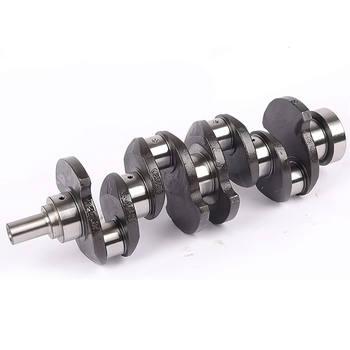
Key Questions to Ask a Potential Crankshaft Supplier
Before you commit your money and your engine's life to a supplier, you need to vet them thoroughly. Arm yourself with the right questions to separate the experts from the amateurs. Have you ever been stuck with a component that didn't meet spec? What was the biggest headache? Asking these questions upfront can save you from that exact scenario.
A Checklist for Vetting Suppliers:
- What specific material grade do you use for your forged/billet crankshafts (e.g., 4340, EN40B)? Where do you source your raw materials? A confident supplier will answer this without hesitation.
- What are your standard manufacturing tolerances for journal roundness and stroke indexing? This shows their commitment to precision. Look for answers in the ten-thousandths of an inch (0.0001").
- Can you describe your balancing process? Do you balance to a specific gram weight? This reveals their attention to detail regarding engine harmonics and vibration.
- What quality control checks does each crankshaft go through before shipping? Do you provide a detailed spec sheet with the part? This is a non-negotiable for any performance part.
- What heat treatment and surface finishing processes do you use? Can you explain why you chose them? Their answer will demonstrate their depth of metallurgical knowledge.
- What is your experience with engines like mine? Can you provide any case studies or testimonials? This helps establish their track record and relevance to your project.
- What are your typical lead times for a custom order, and what is your warranty policy? This sets clear expectations for the business side of the transaction.
The quality of their answers—the detail, the confidence, the transparency—will tell you everything you need to know about the kind of partner they will be.
Finding a Performance Crankshaft for Sale: Red Flags and Green Lights
As you browse online stores and contact potential suppliers, your ability to spot red flags and green lights will be your best asset. The internet is filled with options, but not all are created equal. Many experts agree that the price is often the first, but most misleading, indicator.
Red Flags to Watch Out For
Unrealistically Low Prices: If a billet 4340 crankshaft is priced similarly to a generic cast one, something is wrong. Quality materials and precision machining cost money. Extreme bargains often hide inferior alloys, skipped heat treatments, or poor quality control.
Vague Specifications: Watch out for product pages that say "high-performance steel" without specifying the grade or "precision balanced" without giving a tolerance. This lack of detail is a major red flag.
Poor Communication: If a supplier is slow to respond, can't answer your technical questions clearly, or seems evasive, walk away. If they can't communicate well before the sale, imagine what after-sales support will be like.
No Verifiable Reputation: A supplier with no reviews, no presence in motorsports forums, and no case studies is a gamble. Look for companies that are known and respected in the engine-building community.
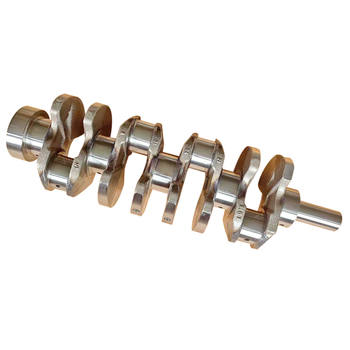
Green Lights That Signal a Great Partner
Full Transparency: The best suppliers proudly display their material specs, manufacturing processes, and QC standards. They provide detailed data sheets and are happy to discuss them.
Engineering-Led Support: When you call with a question, you can speak to someone with genuine technical knowledge who can help you make the right choice for your application, not just a salesperson reading from a script.
Strong Industry Reputation: Look for suppliers whose products are used by reputable engine builders and race teams. A proven track record under the stress of competition is the ultimate testimonial.
Clear Policies: A trustworthy supplier will have a clear, fair warranty and a straightforward return policy. They stand behind their product because they are confident in its quality.
Your Final Checkpoint: Partnering for Peak Performance
Choosing a crankshaft is far more than just a simple purchase. It's an investment in your engine's performance, reliability, and longevity. The crankshaft bears the full force of combustion and is responsible for turning that violence into smooth, usable power. Skimping on this component or choosing the wrong partner is a recipe for disaster.
By understanding the nuances of materials, appreciating the obsession required for precision manufacturing, and knowing the right questions to ask, you can confidently select a Crankshaft supplier that is not just a vendor, but a true partner in your project. Whether you're restoring a classic, building a reliable daily driver, or chasing every last bit of horsepower on the racetrack, the right crankshaft is your foundation for success. Choose wisely, and build with confidence.
For more detailed information, please visit our official website:Crankshaft supplier
About the author: Marcus Thorne is a seasoned automotive engineer with over 20 years of experience in high-performance engine design and powertrain development. Specializing in material science and failure analysis for motorsports applications, Marcus has consulted for several championship-winning race teams. He is passionate about sharing his deep knowledge of internal combustion technology to help enthusiasts and professionals build more powerful and reliable engines.
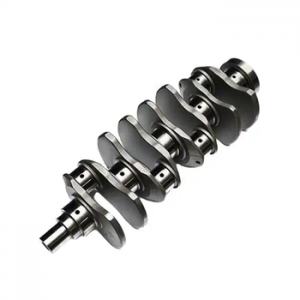 Crankshaft Distributor: The Un
Crankshaft Distributor: The Un
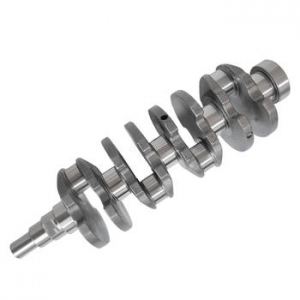 The Ultimate Guide to Sourcing
The Ultimate Guide to Sourcing
 Power Your Business: A Deep Di
Power Your Business: A Deep Di
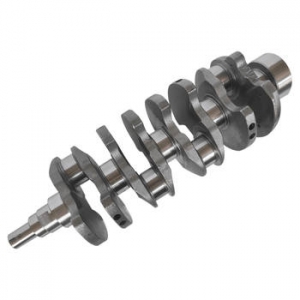 Choosing the Right Crankshaft
Choosing the Right Crankshaft
